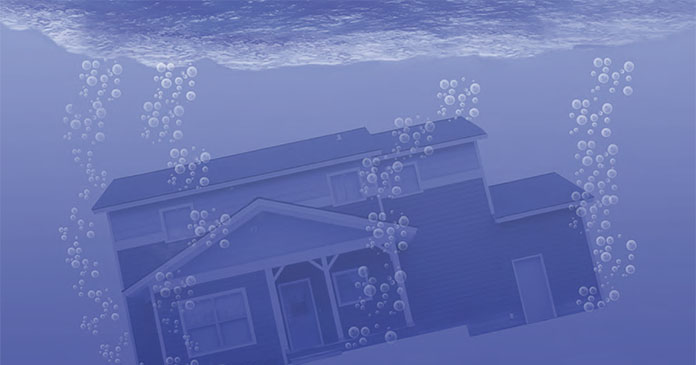Since owners of 10.8 million homes owe more on their mortgage than their homes are worth, a decline from 11 million in the second quarter, they act more like renters than homeowners, suggests the Q3 report on negative equiay from CoreLogic.
“An alternative definition of homeownership is to exclude owners with negative equity, which nets the effective homeownership rate. Adjusting for severe negative equity of 25 percent or more reveals that the effective homeownership rate as of Q3 was 62.4 percent or 4.5 percentage points lower than the official rate. Removing all negative equity homeowners reveals an effective homeownership rate of 56.6 percent or over 10 percentage points lower than the official rate,” the report states.
Foreclosures of severely negative equity properties rather than an increase in home values were responsible for the slightly improved negative equity report. In fact, it was the third consecutive quarterly decline in negative equity for residential properties.
During this year the number of borrowers in negative equity has declined by over 500,000 borrowers. An additional 2.4 million borrowers had less than five percent equity in the third quarter. Together, negative equity and near-negative equity mortgages accounted for 27.5 percent of all residential properties with a mortgage nationwide.
The largest declines in negative equity were concentrated in the hardest hit states. Alaska experienced the largest decline, falling 1.8 percentage points, followed by Nevada (-1.6), Arizona (-1.4), California (-1.2), and Florida (-0.9). Idaho and Alabama are the only states with noticeable increases, which is not a surprise given they are currently the two top states for home price depreciation.
Although the level of negative equity is very high, there are still many homeowners with equity. Nearly half of New York borrowers have 50 percent or more positive equity, which leads the nation, followed by Hawaii (43 percent), Massachusetts (40 percent), Connecticut (39 percent) and Rhode Island (40 percent).
“Negative equity is a primary factor holding back the housing market and broader economy. The good news is that negative equity is slowly declining, but the bad news is that price declines are accelerating, which may put a stop to or reverse the recent improvement in negative equity,” said Mark Fleming, chief economist with CoreLogic.
Those with equity pay down debt Almost half of refinancing homeowners in the fourth quarter paid down their debt at closing, a Washington mortgage broker said.
The Federal Home Loan Mortgage Corp., known as Freddie Mac, said 46 percent of homeowners who refinanced 2010 Q4 brought extra cash to the table to reduce the principal at the closing.
Fewer refinancing homeowners, 35 percent, borrowed more money at the closing, increasing the principal they owed, Freddie Mac said.
It was the highest percentage of homeowners reducing principal since Freddie Mac began tracking the data in 1985.
The high “cash-in” rate was prompted by extremely low interest rates at the beginning of the quarter, Freddie Mac VP and chief economist Frank Nothaft said.
Low interest rates to start the quarter were “at very low levels, the likes of which haven’t been seen in more than 50 years,” Nothaft said.
“Consumers are generally shedding debt and mortgages are just another way they’re doing it,” he said. “Between 2007 and the third quarter of 2010, mortgage debt declined more than $400 billion,” he added, citing numbers from the U.S. Federal Reserve.
Author: Steve Cook, Real Estate Economy Watch















